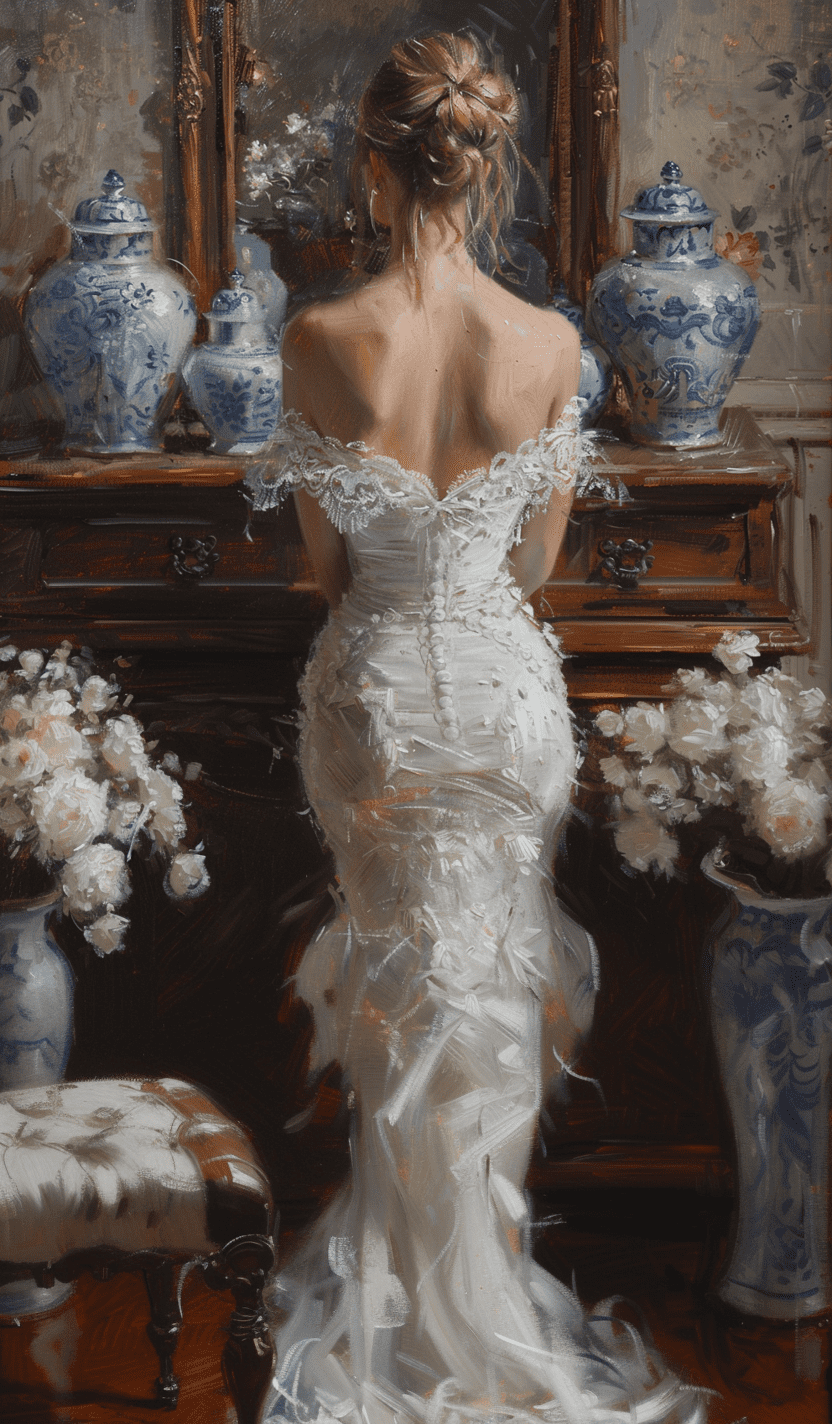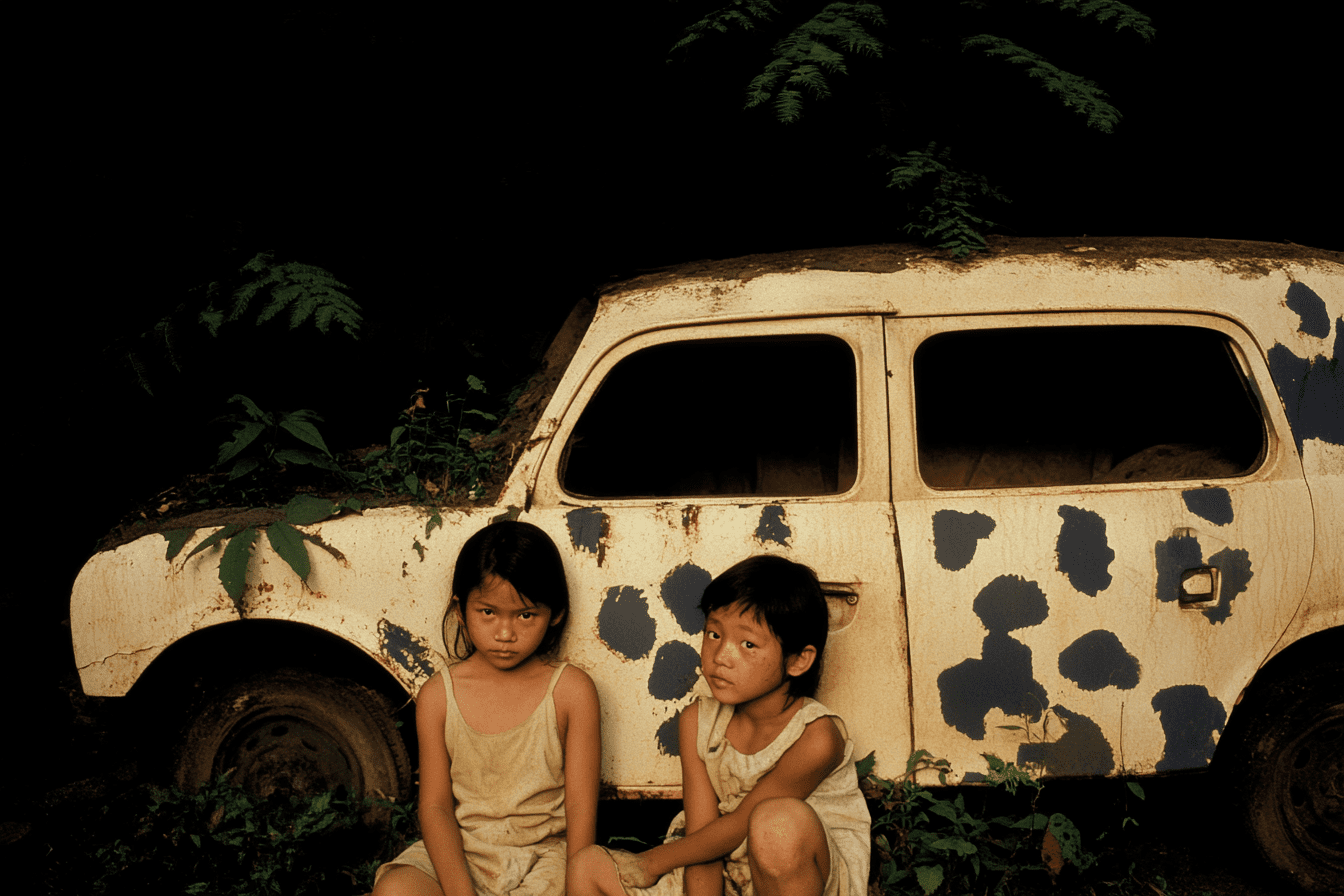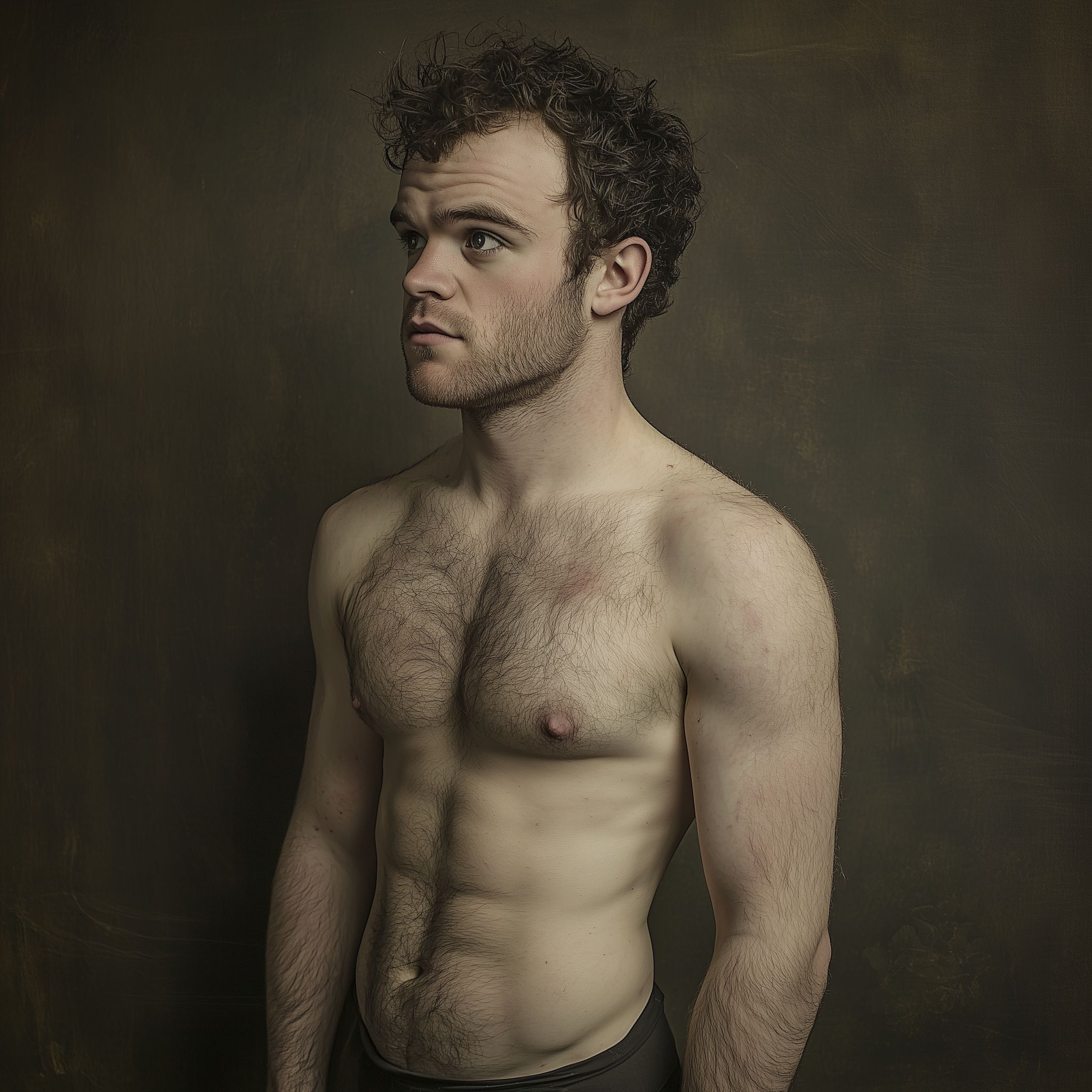The sublime and detailed oil painting captures an exquisite portrayal of an elegant woman adorning a pristine white dress, as she gazes introspectively at her own reflection in a mirror affixed to a quaint wooden chest, embellished with an assortment of delicate and ornate vases. The artist masterfully depicts the subject’s back and shoulders with meticulous artistry and skill, showcasing a sense of grace and sophistication in the elegant posture and attire of the captivating figure positioned in the composition. The choice of a white dress exudes a sense of purity and sophistication, emphasizing the timeless elegance of the subject, while the observational stance in front of the mirror adds a layer of depth and introspection to the overall narrative depicted within the piece.
The wooden chest, laden with intricately designed vases, serves as a backdrop brimming with cultural and historical nuances that contribute to the richness of the setting, adding layers of visual interest and opulence to the scene. The reflective surface of the mirror not only serves as a visual tool capturing the woman’s viewpoint but also symbolizes introspection, self-awareness, and the contemplation of one’s own image and identity. The juxtaposition of the reflective mirror against the assortment of vases creates a dynamic visual contrast, igniting curiosity and inviting viewers to delve into the complexities of the narrative unfolding before them, encouraging contemplation and interpretation of the woman’s encounter with her own likeness.
The painting emanates a sense of refinement and sophistication, encapsulating the essence of elegance and beauty through the intricate brushstrokes and attention to detail employed by the skilled artist. The interplay of light and shadow further enhances the allure of the composition, casting a mesmerizing glow upon the woman’s figure and highlighting the intricate textures and patterns of her attire, as well as the various elements within the scene. The artist’s raw style imparts a sense of authenticity and honesty to the work, allowing for a candid and unfiltered exploration of the subject matter while capturing the subtleties and complexities of human emotion and experience.
With an aspect ratio of 52:89, the frame of the painting presents a unique and unconventional perspective, inviting viewers to engage with the piece in a spatially immersive manner that transcends traditional boundaries of composition and scale. This non-conventional aspect ratio adds a sense of drama and intrigue to the portrayal of the elegant woman and her surroundings, challenging viewers to embrace a fresh and captivating viewpoint that sparks the imagination and draws them into the mesmerizing world crafted by the artist within the confines of the canvas.






